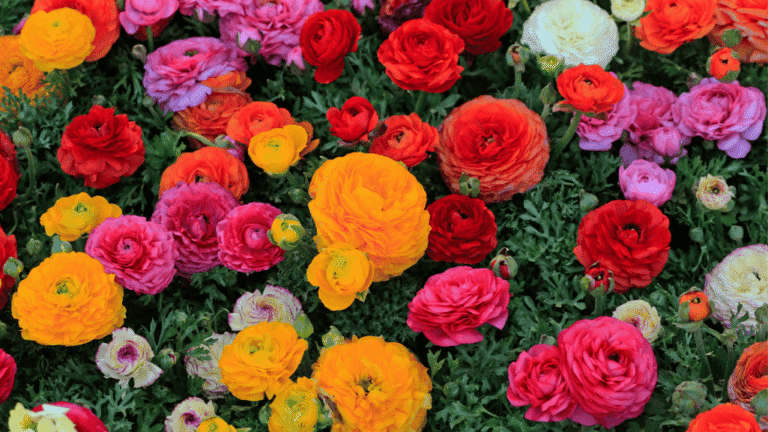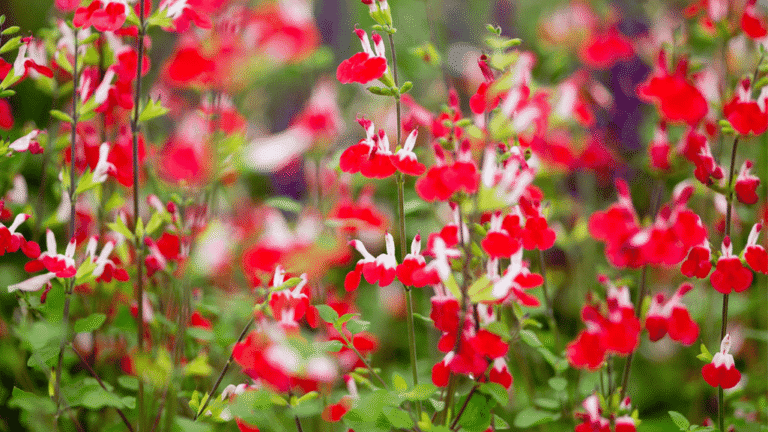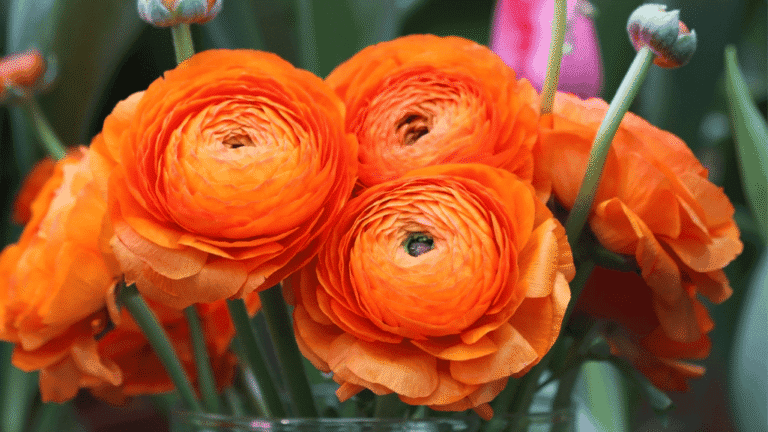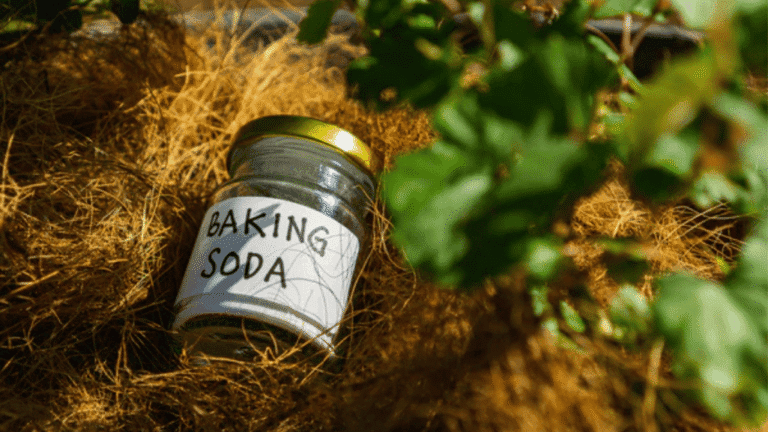Beautiful flowers gardenia Plants For Your homes

Gardenias are known for their enchanting fragrance and ability to make any garden look beautiful. With the right gardenia care tips, you can have gardenia blooms all season long. From spring to autumn, you can enjoy these lovely flowers.
Imagine your garden with lush foliage and beautiful flowers. A gardenia bush that is well taken care of will give you many blooms and a sweet scent. This makes your garden even more inviting.
Key Takeaways
- Using acidic, slow-release fertilizers helps improve the quality and frequency of gardenia blooms.
- Keeping the soil consistently moist but not too wet is key for gardenias to thrive and bloom well.
- Knowing what light and temperature gardenias need helps prevent bud drop and ensures more flowers.
- Testing the soil regularly and adding necessary nutrients keeps gardenias healthy and blooming.
- Pruning gardenias in late summer helps create flower buds for the next year’s beautiful flowers.
Understanding Gardenia Basic Requirements
To keep gardenias healthy and bright, it’s key to know their basic needs. This includes gardenia hardiness zones, gardenia sunlight, and gardenia watering schedule. Gardenias love the warmth and need the right conditions to grow well. They make any garden look lush with their beautiful leaves and fragrant flowers.
The Importance of Hardiness Zones for Gardenias
Gardenias do well in USDA gardenia hardiness zones 8 through 11. They can also grow in zone 7 if protected from the cold. Knowing your local climate zone helps gardeners make sure their gardenias get the best care.
Optimal Sunlight and Watering Schedules for Gardenias
Gardenias need the right amount of gardenia sunlight and gardenia watering schedule. They should get 4 to 6 hours of sunlight each day. This helps prevent them from getting too tall and ensures they bloom well.
It’s also important to water them regularly. The soil should be moist but not soggy. Adjust the watering based on the weather to keep the plants healthy.
| Aspect | Requirement |
|---|---|
| USDA Hardiness Zones | 8-11, with some varieties hardy in Zone 7 |
| Sunlight | 4-6 hours of daily light |
| Watering | Consistent moisture; adjust as necessary |
For more tips on caring for gardenias, check out the privacy policy of Flowers Gardenia. It has great advice on keeping your plants healthy and private.
This section gives gardeners the basics on gardenia hardiness zones, gardenia sunlight, and gardenia watering schedule. These are key to growing a beautiful tropical plant with stunning glossy green leaves. By following these tips, you can make your gardenia thrive.
Selecting the Right Soil for Gardenia Plants
To make sure your gardenias do well, picking the right soil is key. Gardenias are picky and need specific conditions for their roots and nutrition. We’ll look into what gardenias need for healthy growth and how to adjust the soil pH and mix for these lovely, acid-loving plants.
Gardenia Soil Requirements for Healthy Growth
Gardenias love nutrient-rich soil that drains well but keeps moisture in. The best soil mix for gardenias should be rich in organic stuff. Adding compost or well-rotted manure can help. This makes the soil rich and keeps it acidic, which is good for acid-loving gardenias. Testing the soil can tell you if you need more nutrients.
Adjusting Soil pH and Composition
The soil’s pH is crucial for gardenias, which do best in acidic soil with a pH of 5.0 to 6.5. Adjusting soil pH is important if it’s not in this range. You can use elemental sulfur or iron sulfate to make it more acidic. This helps make nutrients like iron available, which is key for gardenias to grow well and bloom.
- Mix organic stuff like peat moss into the soil to make it more acidic.
- Check the soil’s pH often to keep it right for gardenias.
- Add perlite or sand to the soil to improve drainage, as gardenias don’t like wet roots.
By getting the soil’s pH right and making sure it’s full of nutrients, gardeners can grow beautiful, blooming gardenias. These steps create the best home for acid-loving gardenias, keeping them healthy and bright in your garden.
| Soil Attribute | Requirement | Adjustment Method |
|---|---|---|
| pH Level | 5.0 – 6.5 | Elemental sulfur, Iron sulfate |
| Drainage | Well-draining | Add perlite or coarse sand |
| Organic Content | High | Mix in compost or well-rotted manure |
Following these soil guidelines helps gardenias grow strong and boosts their flower production. It makes sure your gardenia soil requirements are met, keeping your gardenias healthy.
Proper Watering Techniques for Gardenias
Learning the right watering techniques for gardenias is key for their growth and blooms. These beautiful plants do well with the right balance of soil moisture. They need neither too much nor too little water. Proper watering is a big part of gardenia care, affecting their health and flowers.
Gardenias need careful watering to promote deep roots and avoid root rot. Here’s a guide on how to keep the right moisture level for both new and mature gardenias:
| Plant Type | Watering Frequency | Additional Notes |
|---|---|---|
| Newly Planted Gardenias | 2-3 times per week for the first 6 weeks | Ensure soil is consistently moist; monitor closely to prevent waterlogging. |
| Established Gardenias | Once per week | Adjust based on rainfall; reduce frequency during winter or non-growth periods. |
| During Drought | Once per week | Maintain watering to prevent stress; consider mulching to conserve moisture. |
| Container Gardenias | Daily during warm months | Check daily as containers dry out faster; avoid standing water to prevent root diseases. |
Watering your gardenias in the early morning is best. This helps reduce evaporation and lets the leaves dry out a bit before night. Using a soaker hose is also smart. It waters the roots directly, saving water and preventing leaf diseases.
Checking soil moisture is crucial, especially at the roots. A simple moisture meter can help you water just right. It keeps your gardenia care on point and your plants healthy.
Fertilizing Gardenias for Peak Blooms
To get the best blooms from your gardenias, it’s key to know what nutrients they need and use the right fertilizer. Gardenias are known for their strong scent and beautiful white flowers. They do well with the right care and food.
Choosing the Right Fertilizer for Gardenias
Choosing the right fertilizer is vital for gardenias. Fertilizers made for azaleas or camellias work great because they have iron and copper. These help with leaves and flowers. Gardenias need these nutrients to grow well and bloom well.
For more tips on caring for these beautiful plants, click here: gardening tips.
Understanding Fertilizing Schedules for Gardenia Health
Being consistent with fertilizing is important for gardenias. Feed them every month in spring and summer to help them grow and bloom well. But, don’t feed them in fall and winter. This stops new growth that could get damaged by frost.
| Season | Fertilization | Note |
|---|---|---|
| Spring to Summer | Monthly application | Encourages growth and blooming |
| Fall to Winter | Avoid fertilizing | Prevents frost-sensitive new growths |
Follow these fertilizing tips to make sure your gardenias get what they need. Giving them the right food at the right time helps them stay healthy. It also makes them better at producing those famous, sweet-smelling flowers.
Gardenia
There are nearly 150 gardenia varieties found in gardens all over the world. These shrubs are loved for their rich gardenia scent and beautiful white and yellow flowers. The ‘Belmont’ is famous for blooming from late spring to early summer. The ‘Frost Proof’ can even grow in cooler places. And the ‘Celestial Star’ blooms from late spring into fall.
When planting gardenia, where and when you plant them matters a lot. They grow best in USDA zones 8 through 11. In zones 6 and 7, choose a frost-resistant type. Make sure they have well-draining, acidic soil and some sunlight to stay healthy and bloom well.
| Variety | Height | Blooming Season | Special Features |
|---|---|---|---|
| Belmont | 5-6 feet | Late Spring – Early Summer | Large creamy flowers |
| Frost Proof | 4-5 feet | Throughout Spring | Cold-hardy |
| Celestial Star | 3-4 feet | Late Spring – Mid-Summer, Reblooms in Fall | Compact and reblooming |
Looking to add beauty and fragrance to your garden? Picking the right gardenia flower and following proper care is key. From the exotic Golden Gardenia to the ‘Daisy’ variety, which blooms from late spring to early fall, gardenias are a favorite. They symbolize femininity, gentleness, and elegance, loved by gardeners everywhere.
Pruning Gardenias to Promote Blooming
Pruning gardenias at the right time is key to keeping them healthy and beautiful. Knowing when and how to prune helps gardenias bloom well. Pruning also helps the plant grow new shoots and keep blooming.
Timing and Technique for Gardenia Pruning
Prune gardenias right after they stop blooming in early summer. This way, you won’t cut off buds for next year’s flowers. Experts say it’s okay to cut both green and brown wood. This helps control the plant’s size and encourages new growth.
Use clean tools for pruning. A mix of 1 part rubbing alcohol to 1 part water is great for cleaning shears. This keeps diseases from spreading.
Deadheading and its Role in Gardenia Care
Deadheading means taking off old flowers to make the plant bloom longer. Deadhead once a week during the busy blooming season. This keeps your garden looking good and helps the plant make more flowers instead of seeds.
| Pruning Activity | Benefits | Recommended Frequency |
|---|---|---|
| General Pruning | Controls size, prevents unruly growth | Every other year |
| Deadheading | Encourages more blooms, extends blooming period | Weekly during blooming season |
| Disinfecting Tools | Prevents disease spread | Before each pruning session |
Pruning and deadheading your gardenias often makes them look better and bloom longer. Following these tips will keep your gardenia shrub looking great.
Battling Common Gardenia Diseases and Pests
Keeping gardenias healthy means watching out for diseases and pests. By knowing what problems they face and how to stop them, gardeners can help their plants do well.
Identification and Treatment of Common Gardenia Ailments
In places like South Carolina, gardenias often get Phytophthora root rot from wet soil. This happens when the soil doesn’t drain well or gets too much water. Powdery mildew also affects them, especially in late summer, hitting young leaves and shoots hard.
For powdery mildew, you can use fungicides like myclobutanil and thiophanate-methyl. Or try natural options like horticultural oil mixed with baking soda, sulfur, or neem oil.
Gardenia stem canker, caused by Phomopsis gardeniae, is another big problem. It comes in through cuts and stays in the canker all winter. Sooty mold, from pests like aphids and mealybugs, also harms gardenias. It covers the leaves, stopping sunlight and hurting the plant’s health.
| Disease/Pest | Signs | Recommended Treatment |
|---|---|---|
| Phytophthora Root Rot | Wilting, root decay | Improve drainage, reduce watering |
| Powdery Mildew | White residue on leaves | Myclobutanil, neem oil |
| Stem Canker | Dark, sunken lesions on stems | Prune infected parts, avoid wounding |
| Sooty Mold | Black coating on leaves | Clean leaves, control sap-sucking insects |
Preventative Measures for Gardenia Plant Health
To stop pests and diseases, keep your gardenias in the best conditions. Watch them closely and act fast if you see any problems. Choosing gardenias that resist diseases and changing how you water and feed them can also help.
Using neem oil or ladybugs can help fight off aphids, a common pest. Fixing poor soil and avoiding extreme weather can also lower the chance of diseases.
Always keep an eye on your gardenias. Catching issues like root damage or thrips early lets you treat them quickly. This keeps your gardenias looking great and healthy.
Encouraging Gardenia Blooms with Humidity and Temperature Control
Gardenia humidity levels and gardenia temperature control are key to getting your gardenias to bloom well. Knowing how to manage these conditions helps your gardenias grow and flower better.
To get the best blooms, keep the humidity at 50% or more. This is very important when the plants are making flower buds. You can keep humidity up by putting your gardenias near other plants or over a tray filled with water and pebbles. This setup makes a humid spot that gardenias love.
Temperature is also very important for gardenias. They do best in daytime temperatures between 70°F and 80°F. But, they need cooler nights, from 55°F to 65°F, to start making buds.
Don’t let gardenias get too cold, below 45°F, in the winter. This can hurt them. Keeping the temperature steady helps prevent buds from dropping off, which is a big problem for gardenias.
Check gardenia humidity levels often and change your care plan as needed.
Make sure the nighttime temperature is right for gardenia temperature control.
For more tips on making gardenias bloom well, check out this resource. It has lots of useful advice.
| Condition | Daytime (°F) | Nighttime (°F) |
|---|---|---|
| Ideal Temperature for Blooms | 70-80 | 55-65 |
| Winter Minimum Temperature | Below 45 | |
In summary, managing gardenia humidity levels and gardenia temperature control well can really help your gardenias grow strong and bloom well. Follow the advice for these conditions to enjoy the beautiful, fragrant flowers gardenias are famous for.
Propagation Techniques for Expanding Your Gardenia Collection
Expanding your gardenia collection makes your garden more beautiful and increases your plant stock. Learning how to propagate gardenias, root them, and transplant them can lead to healthy plants and lots of blooms.
Methods for Gardenia Propagation
Choosing the right method for your garden is key to successful gardenia propagation. Cutting stems 4-6 inches long with several leaf nodes works well. For air layering, make sure there’s good air flow to prevent mold and help roots grow.
Tips for Successful Gardenia Rooting and Transplanting
To root gardenias, keep the area around them very humid and the soil moist but not too wet. Use terracotta pots because they let air in, which is good for roots. When the roots turn white and feel hard, it’s time to move them to a new pot.
Put the new plants in the shade at first to protect them from too much sun. Don’t give them fertilizer right away to help them grow strong.
| Propagation Method | Important Factors | Expected Outcome |
|---|---|---|
| Stem Cuttings | Length: 4-6 inches, High humidity, Avoid waterlogging | Successful rooting within weeks, ready for transplanting when roots are firm |
| Air Layering | Good ventilation, Consistent moisture | Prevents rot, enhances successful rooting |
| Transplanting | Use of terracotta pots, Gradual sun exposure, No early fertilization | Healthy growth post-rooting, stress reduction |
By following these tips and taking good care during propagation and transplanting, gardeners can grow more gardenias. This ensures a garden full of beauty and blooms.
Conclusion
Gardenias bring peace and beauty to any garden with their fragrance gardenia scent. We’ve explored how to care for them, from picking the right soil to watering and pruning. Following these steps ensures your gardenia thrives, filling your space with beauty and health.
Gardenias are tough and can grow in USDA Hardiness Zones 8 to 11. They also do well in containers in colder areas. Their care shows how they symbolize purity, love, and elegance. Each season, they remind us of the rewards of gardening with patience and care.
As we conclude, the gardenia’s beauty and scent reward those who care for them. With the right care, including sunlight, water, and acidic soil, these plants will bloom for years. Whether you’re new to gardening or an expert, growing gardenias adds elegance and beauty to your world.





















